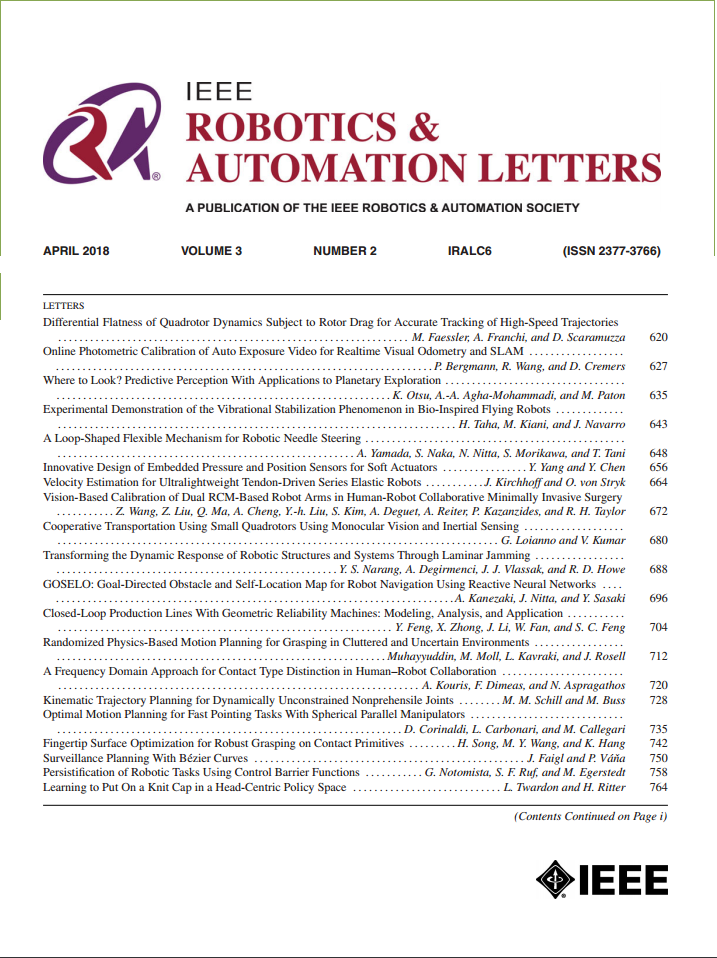Trajectory Optimization Under Stochastic Dynamics Leveraging Maximum Mean Discrepancy
IF 4.6
2区 计算机科学
Q2 ROBOTICS
引用次数: 0
Abstract
This paper addresses sampling-based trajectory optimization for risk-aware navigation under stochastic dynamics. Typically such approaches operate by computing利用最大均值差异的随机动力学下的轨迹优化
研究随机动力学下基于采样的风险感知导航轨迹优化问题。通常,这种方法通过计算标称动力学周围的$\波浪{N}$扰动滚动来估计与一系列控制命令相关的碰撞风险。我们考虑一种设置,在这种设置中,由于昂贵的碰撞检查,使用扰动滚动来估计风险是昂贵的。我们提出了两项重要贡献。首先,我们开发了一种算法,该算法将统计信息从更大的推出集提取到样本大小为$N<;& lt;\波浪号{N} $。因此,我们只使用$N$ rollrollts而不是$\tilde{N}$来估计碰撞风险。其次,我们为碰撞风险制定了一个新的代理,该代理可以利用约简集中包含的蒸馏统计信息。我们使用分布嵌入在再现核希尔伯特空间(RKHS)和最大平均差异(MMD)中形式化这两种算法的贡献。我们进行了广泛的基准测试,以证明我们基于mmd的方法在低样本状态下比使用基于条件风险值(CVaR)的碰撞风险估计的现有基线更安全。
本文章由计算机程序翻译,如有差异,请以英文原文为准。
求助全文
约1分钟内获得全文
求助全文
来源期刊

IEEE Robotics and Automation Letters
Computer Science-Computer Science Applications
CiteScore
9.60
自引率
15.40%
发文量
1428
期刊介绍:
The scope of this journal is to publish peer-reviewed articles that provide a timely and concise account of innovative research ideas and application results, reporting significant theoretical findings and application case studies in areas of robotics and automation.
 求助内容:
求助内容: 应助结果提醒方式:
应助结果提醒方式:


